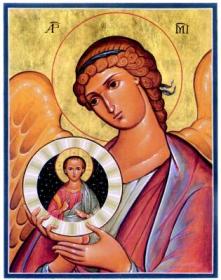As I mentioned
early in Lent, I have been slowly reading
Stephen Mitchell’s translation of the
Tao Te Ching. Actually, I’m not sure the term
translation captures what Mitchell has given us. His work is often highly paraphrased, and sometimes it goes way beyond paraphrase, becoming a fresh expression of his interpretation of the gist of a chapter. Chapter 50, on the subject of life and death, is a difficult chapter, and even attempts at literal translation can vary widely. Most translations involve the number thirteen, tigers, rhinos, and armor – like these
three translations. But Mitchell skips all of these. Instead he gives us a description of the Master who accepts the inevitability of death and is therefore not afraid to live. It reminds me of nothing so much as Christ in his last days. Without further ado . . .

The Master gives himself up
to whatever the moment brings.
He knows that he is going to die,
and he has nothing left to hold on to:
no illusions in his mind,
no resistances in his body.
He doesn’t think about his actions;
they flow from the core of his being.
He holds nothing back from life;
therefore he is ready for death,
as a man is ready for sleep
after a good day’s work.
 The Master gives himself up
The Master gives himself up

2 comments:
Thanks, Roland. Not knowing the context of this chapter, I'd be curious to know more about how you see the taoist philosophy relating to mystic/contemplative Christianity. The description you give is one that does remind me of Christ's willingness to suffer death on our behalf. However, is that the same thing as saying that we should each live in the same manner, knowing that our lives are forfeit, that death is a reality, and that we should offer no resistance to following paths that would seem to lead to that end? Or would you offer a different understanding?
I would say that the Christian monastic tradition embodies the idea that the monk's life is surrendered to God, and he is therefore, in a sense, already dead to the world. In the Benedictine tradition, for instance, in the rite where the monk takes his life vows, he prostrates himself before the altar in the same spot where his casket will rest at his Requiem.
An Orthodox monk from California, Hieromonk Damascene, has written the book Christ the Eternal Tao, which expresses Christian teaching in Chinese terms. It is interesting to note that the Greek logos is translated as tao in Chinese versions of John 1.
Post a Comment